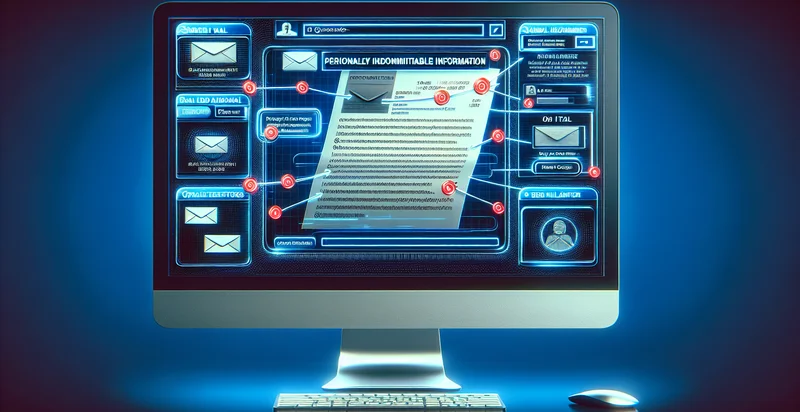Identify if PII is in a text message
using AI
Below is a free classifier to identify if PII is in a text message. Just input your text, and our AI will predict if the text message contains PII - in just seconds.

Contact us for API access
Or, use Nyckel to build highly-accurate custom classifiers in just minutes. No PhD required.
Get started
import nyckel
credentials = nyckel.Credentials("YOUR_CLIENT_ID", "YOUR_CLIENT_SECRET")
nyckel.invoke("if-pii-is-in-a-text-message", "your_text_here", credentials)
fetch('https://www.nyckel.com/v1/functions/if-pii-is-in-a-text-message/invoke', {
method: 'POST',
headers: {
'Authorization': 'Bearer ' + 'YOUR_BEARER_TOKEN',
'Content-Type': 'application/json',
},
body: JSON.stringify(
{"data": "your_text_here"}
)
})
.then(response => response.json())
.then(data => console.log(data));
curl -X POST \
-H "Content-Type: application/json" \
-H "Authorization: Bearer YOUR_BEARER_TOKEN" \
-d '{"data": "your_text_here"}' \
https://www.nyckel.com/v1/functions/if-pii-is-in-a-text-message/invoke
How this classifier works
To start, input the text that you'd like analyzed. Our AI tool will then predict if the text message contains PII.
This pretrained text model uses a Nyckel-created dataset and has 2 labels, including Contains PII and Does Not Contain PII.
We'll also show a confidence score (the higher the number, the more confident the AI model is around if the text message contains PII).
Whether you're just curious or building if PII is in a text message detection into your application, we hope our classifier proves helpful.
Related Classifiers
Need to identify if PII is in a text message at scale?
Get API or Zapier access to this classifier for free. It's perfect for:
- Data Privacy Compliance: Organizations can implement the PII identifier to ensure compliance with data protection regulations such as GDPR or CCPA. By automatically detecting personally identifiable information in text messages, companies can flag messages that require special handling or encryption, helping to mitigate the risk of data breaches.
- Customer Support Automation: This function can be integrated into customer support chatbots to detect PII shared by users. When PII is identified, the system can either alert a human agent or automatically anonymize the information, ensuring safe handling of sensitive data during customer interactions.
- Human Resources Management: In HR settings, the PII identifier can help monitor internal communications for sensitive employee data, like Social Security numbers or personal addresses. This ensures that such information is not improperly shared or exposed, supporting organizational policies on confidentiality and employee privacy.
- Compliance Monitoring: Financial institutions can use the PII identification feature to monitor communications for regulatory compliance. By automatically detecting and flagging messages containing sensitive customer information, organizations can maintain oversight and adhere to regulations surrounding data security.
- Fraud Detection: The PII identifier can serve as a tool in fraud detection systems by monitoring communications for the sharing of sensitive information that might indicate phishing attempts or unauthorized access. This proactive approach can help in identifying suspicious behavior and preventing potential security breaches.
- Marketing Campaign Optimization: Marketers can use this function to ensure that promotional communications do not inadvertently include PII. By filtering out sensitive information, businesses can refine their messaging strategies and maintain acceptable communication standards, building greater trust with customers.
- Legal Document Review: Law firms can implement the PII identifier in the process of reviewing documents and communications. This tool can automatically flag any text containing PII, facilitating the redaction process and ensuring compliance with confidentiality agreements and privacy laws before document submission.


